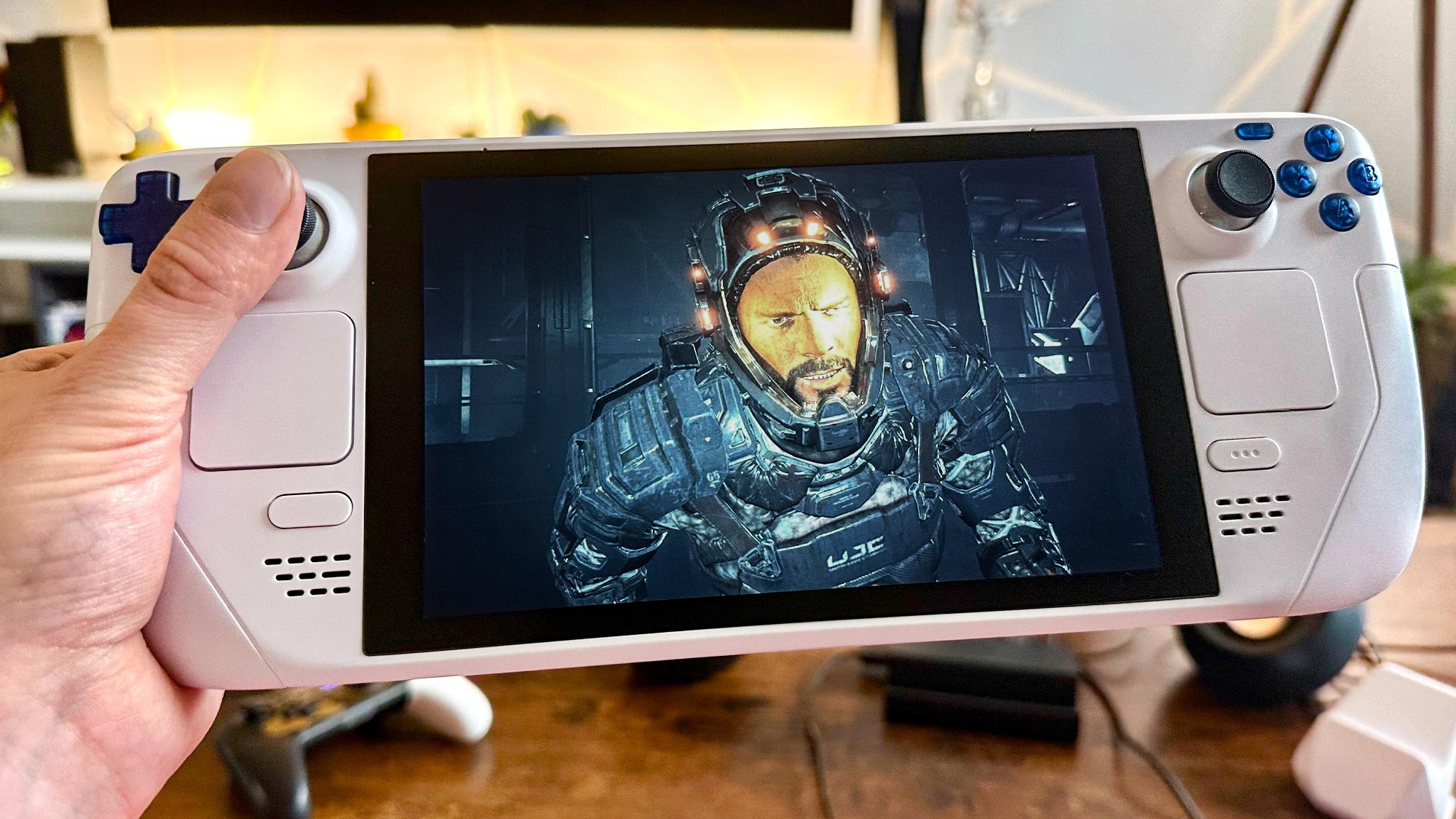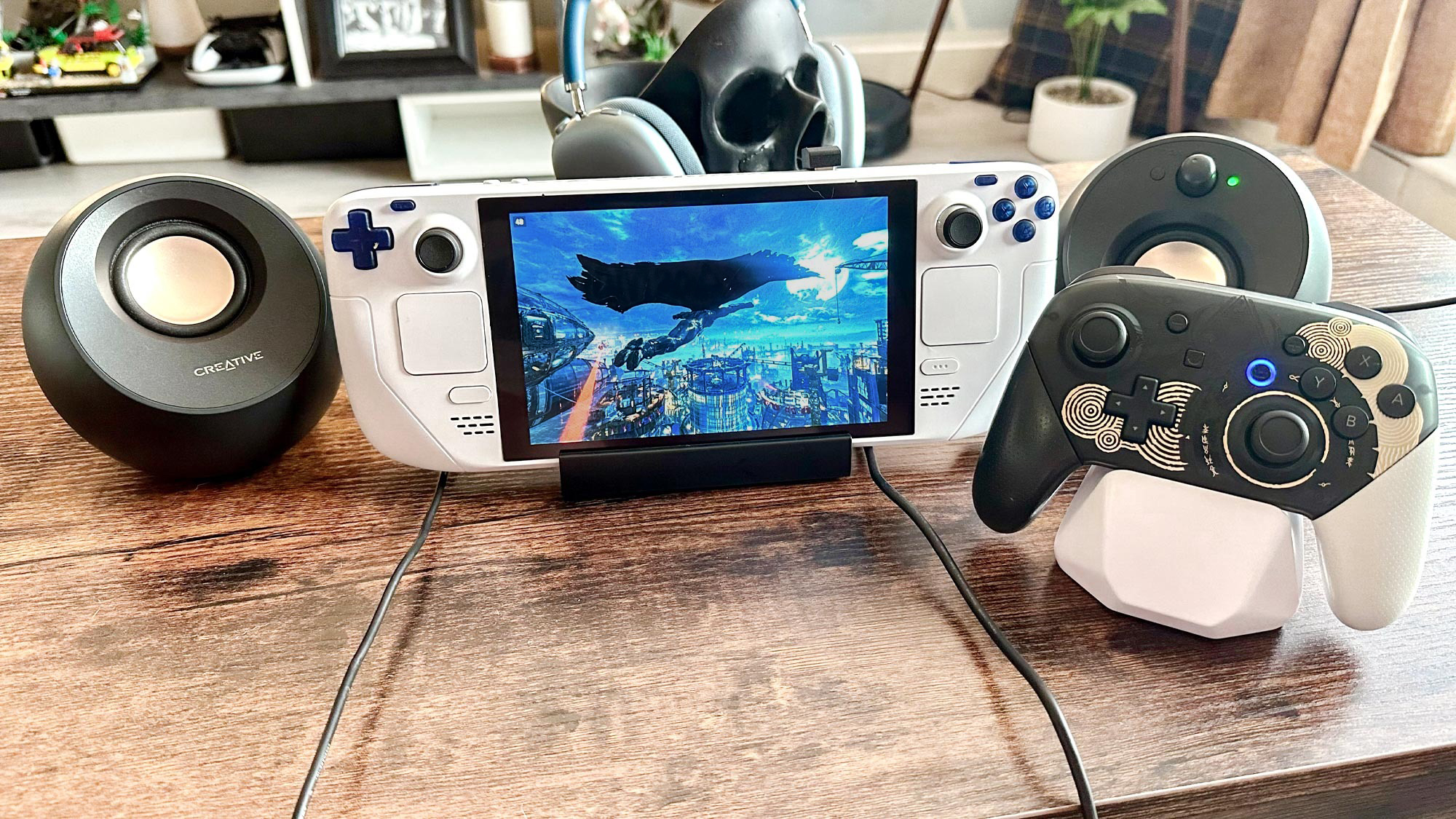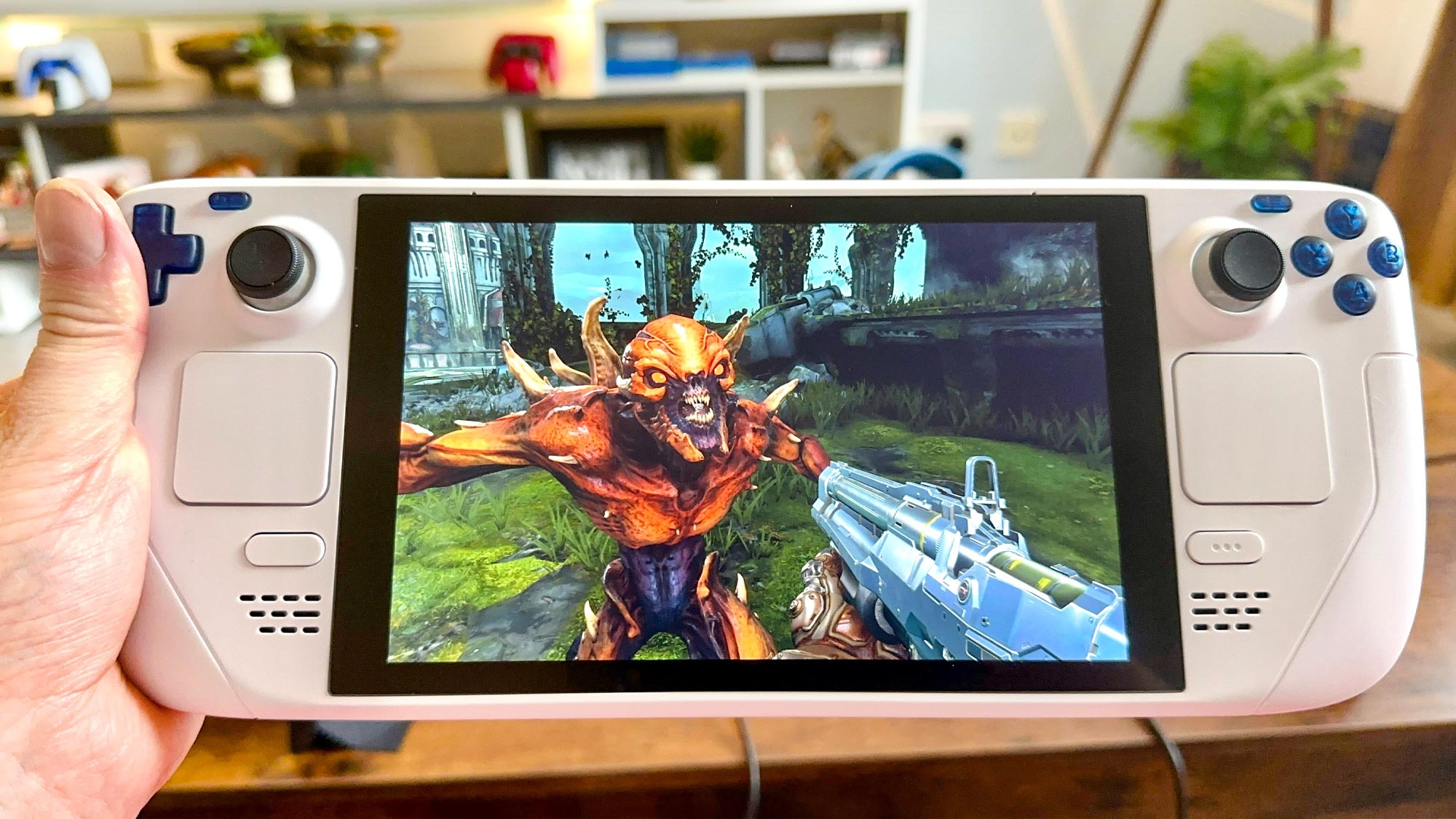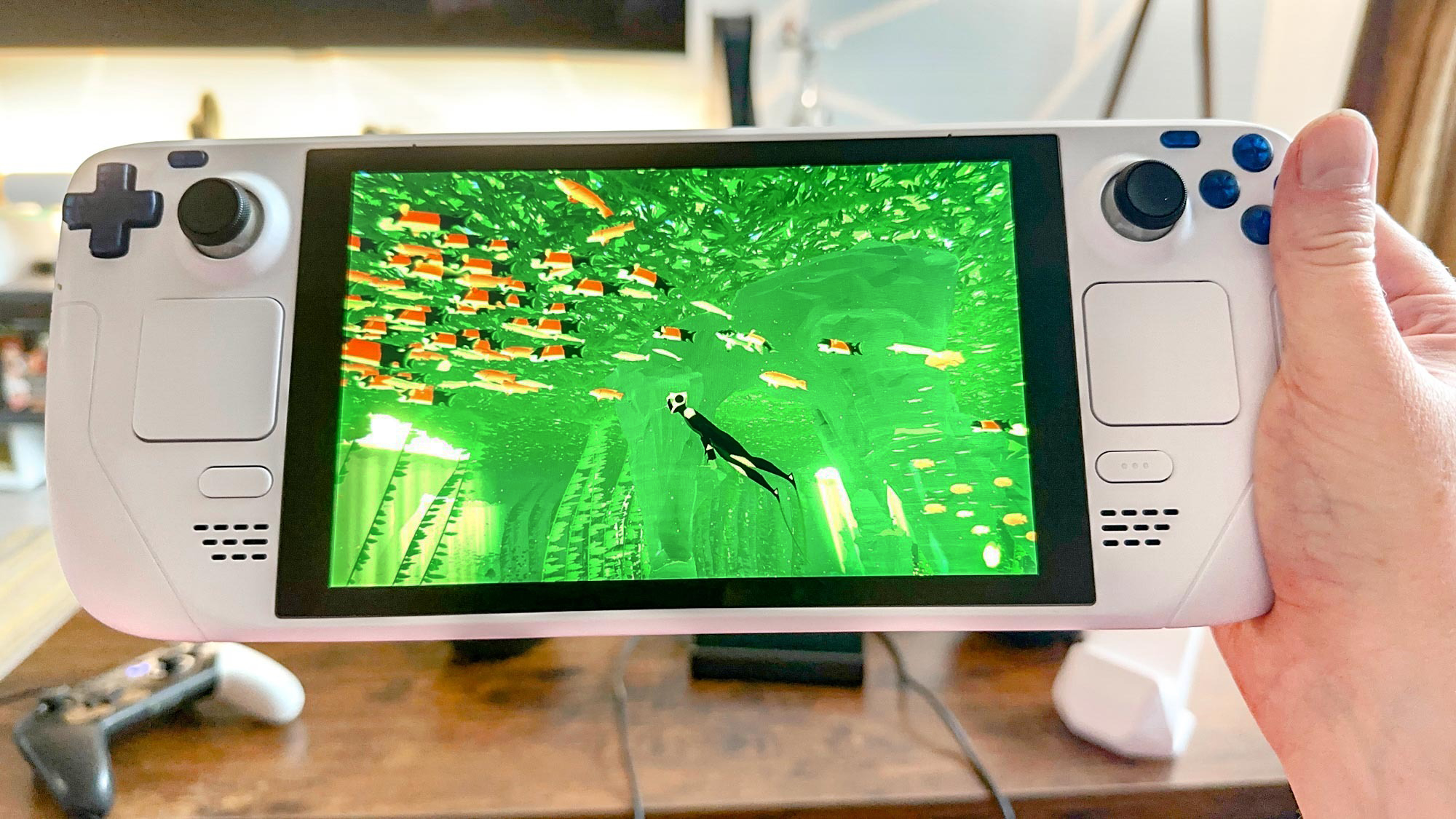I owe every Steam Deck owner a massive apology
I threw shade at the Steam Deck and I was wrong

When it initially launched a little under a year ago, my colleague Tony described Valve’s mini PC sensation as “the Nintendo Switch for adults” in his Steam Deck review. Well good news, folks! I’ve finally become a gaming grown-up.
I’ve become intimately familiar with Steam Deck over the past week ever since the folks at Mega Modz sent me an awesome looking white model on loan.
If you think the default Deck is on the dreary-looking side, this site lets you customize the color of every part of the handheld; from its back paddles, trackpads, right down to the shade of its view and menu buttons.
Before I really got to know it, my previous interactions with the teeny portable PC had been limited to brief interactions with a friend’s Deck… which sounds way more loaded with innuendo than I intended.
Now that I’ve had adequate time to experience what Valve’s inspired machine can do, I’ve become a full-blown convert. If you’re listening, Gabe Newell — and every Steam Deck owner out there — I offer you the most groveling of apologies. I hope you’ll accept them.
Previously, I’d been throwing shade at the Deck for months.
Valve’s inspired machine has made this former skeptic become a full-blown convert in a matter of days"
I flat out said I had no interest in Valve’s handheld gaming PC until The House of Half-Life developed a Steam Deck OLED. Oh what an arrogant screen snob I’ve been. If I could DeLorean myself back in time, I’d slap some sense into Past Me.
Turns out, the screen on the Deck is perfectly decent. Its slightly above 720p display (1280 x 800 resolution), is noticeably crisper than Nintendo Switch's panel, mainly because you can enable anti-aliasing in the majority of Steam Deck-comptable games. It sounds sad, but killing in-game ‘jaggies’ is a big deal to my obsessive eyes.
Though black levels on the Deck’s screen obviously aren’t on a par with the Switch OLED, I’m pleasantly surprised at how good contrast performance is on its relatively modest LCD panel.
Letting off Steam

Sure, I can spot minor backlight bleeding around the corners of my loaner Steam Deck, but that’s an inherent, long-standing problem with LCD display technology. That A/V savvy phrase probably sounds brutal if you’re not familiar with it, right? All it means in real-world terms is that the corners of your average LCD screen are normally noticeably brighter than the rest of the panel, and the Deck’s display is no exception.
Is this a little distracting when playing in the wee small hours in a darkened room while prowling the streets of Gotham in Batman: Arkham Knight? Yes, but it’s in no way game-ruining. Despite not being officially ‘Deck Verified’, Rocksteady’s trilogy-capper runs at a stable 30 fps on the handheld with minimal settings tweaks. If you’re a fan of the Dark Knight, it’s a delightful way to experience this exceptional threequel in the palm of your hands.
Screw whatever hyper niche screen quibbles I may still harbor about the Deck. What lies at the core of the appeal of Valve’s system is the ability to transport your ever growing Steam pile of shame into the comfort of your living room… or your latrine, to lean on a hideous handheld gaming cliché.
The appeal of Steam Deck is the ability to transport your Steam pile of shame into the comfort of your living room"
Instant, on the go accessibility lies at the heart of the Deck’s mantra, and in this sense it absolutely smashes my preconceptions about the limits of what a fully functioning 1.47 pound PC can achieve.
It’s no surprise that the OS is a dream to navigate on Steam Deck. Turns out, Valve is pretty good at this digital storefront malarkey. It’s almost like the company invented the concept in the gaming market back in ye olden days of 2003. That the latest version I’m currently using (SteamOS 3.4.8), offers such an instantly understandable, hassle-free experience is a joy and undoubtedly part of the reason the Deck has become such a sales success.
This is PC gaming in its purest, most appealable form: accessible, malleable and capable of delivering strong results with a little patience and settings tweaks.
All hands on Decky

Over the past week I’ve learned how to install Steam Decky, an easy to understand mod platform that, when you get to grips with it, makes you feel like you’re Keanu in The Matrix when he discovers he’s The One and can effortlessly stop bullets. I’m no coder, but the hugely passionate Steam Deck community keeps providing buffoons like me easy-to-use tools that instantly improves your gaming experience with no threat of bricking your hardware.
Being able to benefit from a carefully curated selection of user-crafted mods is next level when you consider how vehemently Nintendo controls authorship of your Switch experience.
With Decky installed, a whole host of instantly appreciable upgrades are available at your fingertips within seconds. Want to boost the volume of the Deck’s already decent speakers? You got it. Fancy tweaking the screen saturation of the display on a system-wide level? Have at it.
The most useful Decky mod of all? That would be the ProtonDB Badges plugin — a lifesaver of an extension that lets you know how well non-Deck verified games run on Valve’s palm-friendly hardware.
Turns out, there are a bunch of the best Steam games that play just fine on the handheld, regardless of Valve’s seal of approval and this plugin opens up a vast library of games you might otherwise steer clear of based on the Deck’s official way of verifying whether a title runs well on the backpack-friendly gaming PC.

I may be a newcomer to the Deck community, but I’ve already found it to be informative, friendly and generous with passing on knowledge.
The passionate fanbase that envelops Steam Deck is indicative of how special this hardware is. I’m a hardcore desktop gamer who is used to the sort of 4K / 120 fps experiences the likes of my Nvidia GeForce RTX 4090 can provide.
Though the gap in hardware between Team Green's top-end GPU and Valve’s reasonably priced handheld remains colossal, the highest compliment I can pay the Deck is that I’ve not touched my super-expensive gaming rig in over a week.
The passionate fanbase that envelops Steam Deck is indicative of how special this little piece of hardware is"
Playing on Steam Deck has also made me much less of a frame rate snob. Thanks to easily tweakable sliders that let you control refresh rates and fps limits, locking down a stable 30-40 fps experience on a lot of modern games is achievable with a little legwork. I'm no longer the '60 fps or GTFO' elitist I used to be, and I credit that to my short time with the Deck.
This is probably the most repentant article I’ve ever published on the internet. I was wrong dead wrong about the Steam Deck. Despite some screen imperfections, this is a genius piece of hardware that has done more to bridge the gap between the increasingly combative lines PC and consoles gamers wage every day.
Steam Deck is a fantastic piece of hardware. Now roll on the Steam Deck OLED.
More from Tom's Guide
Sign up to get the BEST of Tom's Guide direct to your inbox.
Get instant access to breaking news, the hottest reviews, great deals and helpful tips.

Dave is a computing editor at Tom’s Guide and covers everything from cutting edge laptops to ultrawide monitors. When he’s not worrying about dead pixels, Dave enjoys regularly rebuilding his PC for absolutely no reason at all. In a previous life, he worked as a video game journalist for 15 years, with bylines across GamesRadar+, PC Gamer and TechRadar. Despite owning a graphics card that costs roughly the same as your average used car, he still enjoys gaming on the go and is regularly glued to his Switch. Away from tech, most of Dave’s time is taken up by walking his husky, buying new TVs at an embarrassing rate and obsessing over his beloved Arsenal.
